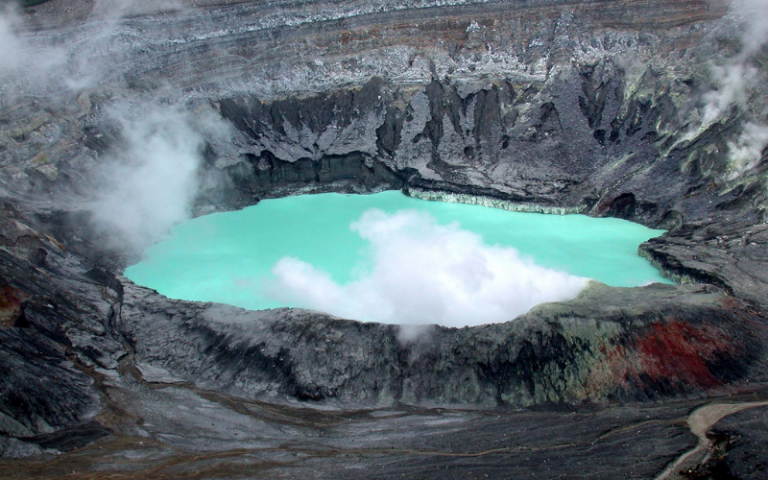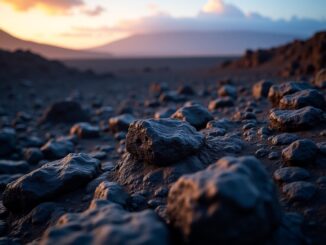There is a wonderful lake in Costa Rica, with breathtaking colors and pastel shades ranging from pink to blue to green. Sadly, it is as beautiful as deadly. Its pH reaches even zero while the bottom is covered by liquid sulphur. No living creature can inhabit it. In other words, it is a living hell of water. Due to its strange activity, the Poás volcano provides an excellent and extreme example of the effects of acid rain.

There is a wonderful lake in Costa Rica, with breathtaking colors and pastel shades ranging from pink to blue to green. Here, in fact, in one of the craters of the Poàs volcano rises the lake. Unfortunately, however, this stretch of water is as beautiful as it is deadly.
Let’s find out together why.
The Deadly Lake in Costa Rica
It is a deadly lake for all intents and purposes. Its pH reaches even zero while the bottom is covered by liquid sulphur. No living creature can inhabit it.
In other words, it is a living hell of water. The Poás volcano is a stratovolcano of basaltic nature, 8885 feet high. It is located within one of the most important and visited natural parks in Costa Rica, which covers 5600 hectares.
Its largest crater houses the lake. It has a diameter of about 4900 feet and a depth of 1000 feet. Sulphurous gases are rising from the basin, which also suggests the presence of geysers. The other crater, called Botos, is home to another lake. Unlike the first, however, this one has cold waters, and connects to the Rio Angel and Rio Sarapiqui rivers.
The evaporation of acidic gases gives rise to rains and fog that poison the ecosystems of the area. Moreover, it is impossible to admire this landscape up close, as the gases would create irritation to the eyes and lungs.
An Example of the Effects of Acid Rain
The volcano provides an excellent and extreme example of the effects of acid rain. Around the caldera, and for several miles, the little existing vegetation is suffering. Moreover, it is all black because of the contaminated humidity that falls from the clouds always present around the crater.
It is a powerful symbol of the geothermal forces that have formed the country. When the fog and clouds thin out, even from a great distance you can see the green sulphurous rain, fed by the lake located at the bottom of the crater, surrounded by smoke and vapors. The water from the lake constantly passes through the cracks in the hot rock. Then it evaporates and creates pockets of steam.
When the pressure in these pockets exceeds the weight of the water, steam bursts into the geysers that rise up to 800 feet high. As a result, it is also the largest active crater in the world.
Although the crater and the lake are spectacular in their own way, the Poás volcano does not give rise to eruptions. The last one dates back to 1954, although the most violent eruption dates back to 1910. That year, almost a million tons of ashes were exploded together with a huge column of smoke and steam.




